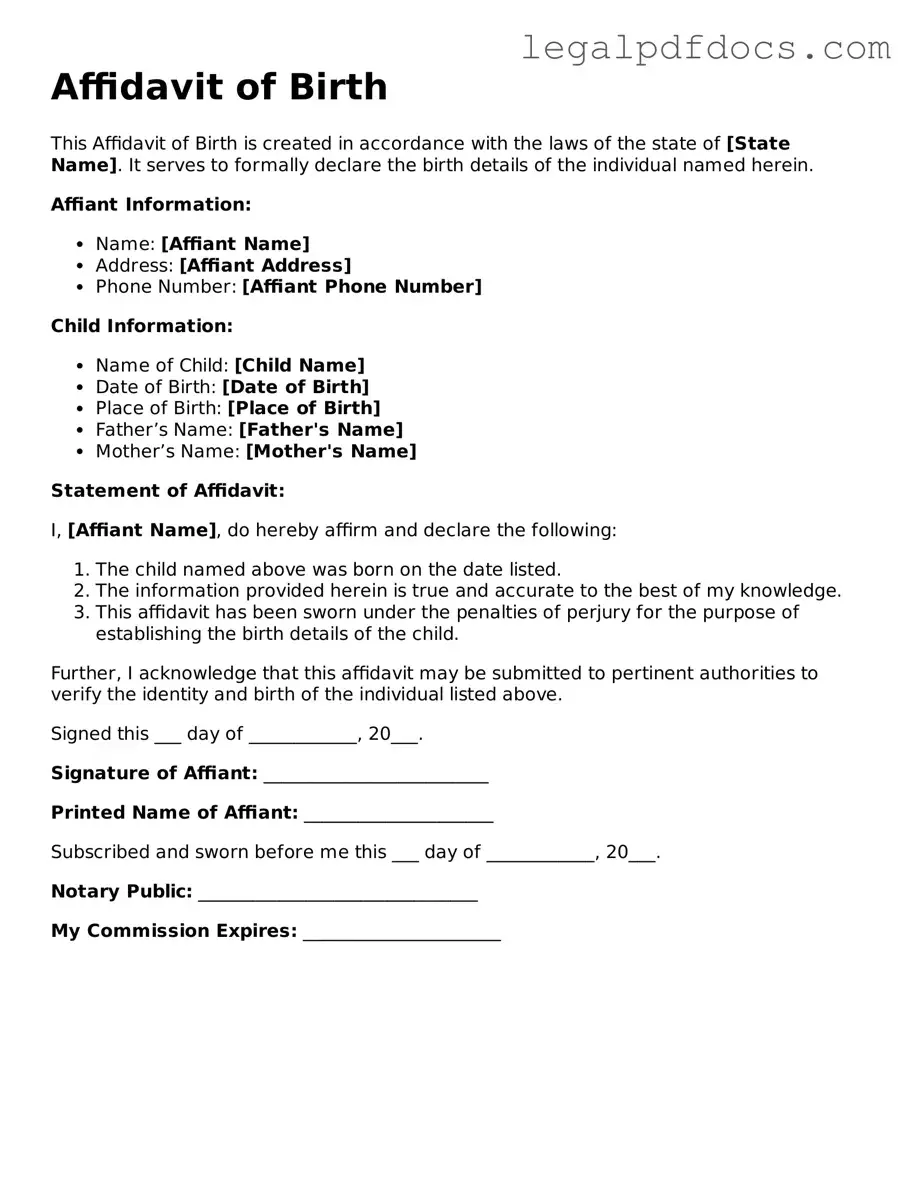The Affidavit of Birth form serves as a vital document for individuals who need to establish their identity and citizenship when a formal birth certificate is unavailable. This form is particularly useful in situations where a birth was not recorded due to various reasons, such as home births or births that occurred in remote locations. Typically, the affidavit is completed by a knowledgeable witness, often a parent or guardian, who can provide accurate details about the child's birth, including the date, location, and parentage. In many cases, this document must be notarized to ensure its authenticity and may require additional supporting documents, such as identification or medical records. Understanding the requirements and implications of the Affidavit of Birth is essential for those navigating the complexities of legal identity and citizenship. By properly completing this form, individuals can secure necessary documentation for school enrollment, travel, and other important life events.
